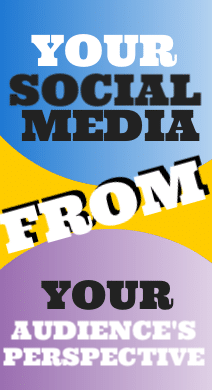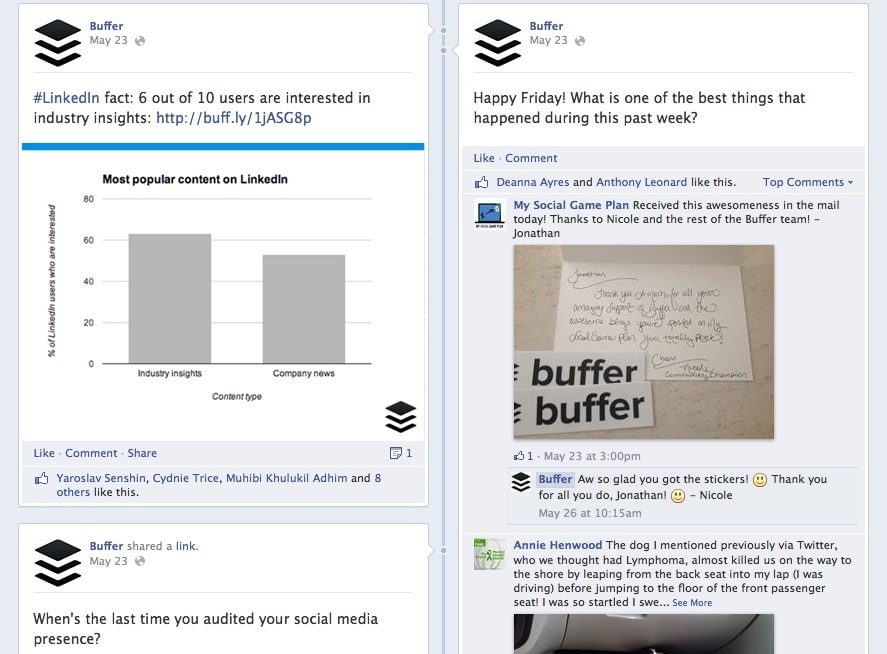
Scenario One:

You’ve convinced your superiors that a social media marketing plan is worth the company’s investment. You’ve developed a formal marketing strategy. You’re ready to go. What now?
Do you jump in and aim for a successful ROI for your company, or do you step back and consider how your actions will affect your audience?
Scenario Two:
You’re a social media veteran. You’ve developed a high fan and follower base, but you’re struggling to maintain and improve it. Have you considered whether your content is to blame?
In social media, the focus can’t be all on you and your company. Your fans and followers don’t want to be bombarded by sales pitches and other self-promotion. It’s about interaction and contribution. The best way to reach this is to look at your audience and determine what content to share from their perspective.
Below is an extensive list of tips to help you better understand your audience both before and after publishing content. I’ve also included some social media content no-no’s to keep in mind.
Ask Questions
By asking your audience questions, especially those that require a detailed response, you prompt your audience to communicate with you. This is a perfect opportunity for you to find more content ideas that your audience will welcome, and it also helps you better understand the people you’re communicating with.
On a different note, don’t forget to respond to people’s comments when possible. Smaller organizations have a better ability to do this, but that doesn’t mean the larger companies shouldn’t try. Your audience will greatly appreciate your personalized responses, and that can easily improve the overall success rate of your content.
The social media management company, Buffer, does this very well. They ask questions often, and they do a great job at responding to people’s comments. If you want to see what this looks like, I suggest you check out their Facebook page.
Follow the 80/20 Rule
The 80/20 rule means that 80% or more of your content should be contributions to your field or industry and no more than 20% of it should be in any way about you.
If you’re looking for some content ideas, here’s a quick list:
- Free information, such as ebooks, whitepapers, and webinars
- Create lists on Twitter with industry influencers
- Find or ask for testimonials or stories from your audience or past clients
- Publish product demonstrations via videos on YouTube
- Share evidence of your success via social media milestones
- Thank customers, donors, and clients publicly for long-term contributions after you reach a business goal

Find the Balance
You can’t successfully reach an audience when you sound like a robot. That’s always a huge put-off for your audience because social media is supposed to be personal and conversational. In order to keep your audience’s attention and catch the attention of others, your content has to have a good variety.
Links are great, but don’t have all of them go to your website. Publish links to other sources in your industry that have provided insightful materials that your audience might be interested in.
Buffer published an article about where to find free images for your social media and blog content that has helped me out greatly.
You can also try creating your own images, of course. People are very visual these days, so you should try to use images as often as possible without sacrificing your content message.
When you want to tweet images, make sure the social media management tool sends them in a way that they appear in line with your text instead of hiding behind a link. People are not likely going to click to see the image because Twitter sends the user to a new window, making it harder to view and go back to other content.
The Big One: Social Media Content No-No’s
Don’t overdo the text shortcuts on Twitter. Your content is supposed to be quick to read and easy to understand.
- If it takes more than 2-3 seconds to read a tweet, it won’t be read.
- Don’t sacrifice proper grammar to fit everything into one tweet. Debra Murphy explains it perfectly here.
- Don’t overdo the hashtags. Anywhere. They don’t work on Facebook, so don’t waste your time.
- Never retweet or share others’ personal messages sent to you via @ symbol. You’ll seem too attention seeking. Your audience doesn’t want to feel overwhelmed by tweets and posts that don’t pertain to them, especially on Twitter. You risk being muted or even unfollowed.
In the end, as long as you don’t spam your audience or make yourself look needy, you’re probably on the right track. You want to publish content that drives your audience to your website because that is where sales comes into play. Social media is not the place for sales. It is a community where people help each other. You will have the best ROI not by shoving self-promotion down your audience’s throat but rather by sharing resources that they can use to either learn more about the industry or about what you have to offer. That last part is tricky, but all you have to do is remember:
Social media is not about you. It’s about helping the people behind the computer screen who have a need that you can fill. It’s about building relationships and making an impact in your industry through contributions and conversation. As long as you remember that, you’re better off than those who don’t.



